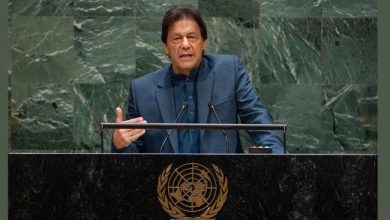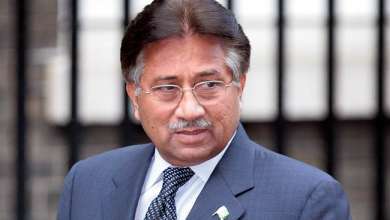G-20 meetings in Srinagar: Another Indian tactic to suppress Kashmiris

Written By: Moaz Bashir
Kashmir is called paradise on the Earth. It is famous for its natural beauty, particularly vast grasslands, big lakes and beautiful gardens, etc. It is considered one of the favourite destinations for tourists across the world. In the past also, this region was a favored destination for kings and rulers due to its dazzling beauty. Kashmir was the summer capital of Mughal rulers Aurangzeb and Shah Jahan. Unfortunately, the indigenous population of this beautiful valley has always been the victim of exploitation and persecution at the hands of foreign aggressors who invaded Kashmir from time to time.
Before the partition of the subcontinent, Kashmir was ruled by Dogra Maharaja Gulab Singh and his descendants till 1947. Dogra forces wreaked havoc by killing and torturing thousands of Kashmiris on multiple occasions. At the time of partition, India hurriedly rushed its troops to Srinagar and occupied the territory forcibly against the will and wishes of Kashmiris who wanted to be a part of Pakistan.
Since then, India has been using every tactic to suppress the voices of Kashmiris. It is quite disturbing that the dispute has been hanging around despite the passage of 75 years, and the world has miserably failed to resolve this long-drawn conflict.
The universally accepted principle of self-determination on the basis of which many nations achieved statehood status in the 20th century is still not available for Kashmiris. Sadly, the world has been watching the situation like a silent spectator. The world leaders’ indifference and lackadaisical approach towards Kashmir and the Kashmiris has emboldened India to continue with its repressive policies against Kashmiris.
Thousands of Kashmiris have been martyred during the ongoing freedom struggle against India. UN reports on the human rights situation in Kashmir are full of the details of the atrocities the Indian forces have been committing against Kashmiris.
India’s nefarious designs in the region have become even more evident ever since the Bhartiya Janta Party (BJP) came to power in India.
First articles 35A and 370A were abrogated by Indian authorities. These articles allowed Kashmir a measure of autonomy in the Indian constitution. Besides that, Indian authorities arrested the entire political leadership of Kashmir so that no one could question her draconian measures.
Even pro-Indian or so-called mainstream political leaders, including Farooq Abdullah, were detained in their homes. Examples of such fascist measures are difficult to find in any other place in the world.
The situation in the held territory continues to be serious and it is the army that rules the roost in Kashmir. Conditions on the ground portrayed even a grimmer picture of the region where uncertainty, chaos and lawlessness reign supreme.
Amidst all the chaos, India, which holds the presidency of the G-20, has scheduled a meeting of the working group of the G-20 summit in Srinagar, Kashmir on 22-24 May 2023. The crafty move by the Indian government is meant to show the world that normalcy has returned in Kashmir. What the Indian government wants to convey to the world by holding an international conference in Srinagar is that Kashmiris are satisfied with Indian policies.
The fact is that India has been exploiting its membership in an international forum to advance its self-serving agenda, a point which has been raised by Pakistan, a main stakeholder of the Kashmir conflict.
The G-20 countries should take effective cognisance of the matter, adopt a moral stance and refrain from participating in any such event being held at a place where locals are being persecuted just for demanding their rights.
Where a state has been subjected to the longest curfew in the history of the world. The state, where the internet is intentionally banned, so no one can tell the horrific stories of Indian brutalities to the outside world.
It is worth mentioning here that Amnesty International has also reported that the civil society and media in Kashmir have been drastically repressed by the Indian government.
Holding G-20 working group meeting in Srinagar would have severe repercussions for the future of Kashmir;
- It would set a wrong precedent for the other G-20 countries. Other countries would also use this platform to advance their national interests. Kashmir is not only a single disputed territory in the world. In the future, other great powers will also use the same tact and will hold summits in their relatively disputed regions.
- Secondly, G-20 nations’ participation in the meeting in Srinagar will hurt the feelings of Kashmiris. Kashmiris will feel as if they were betrayed by the world.
- Thirdly, G-20 is a pure economic platform and is concerned with development, health, climate change, trade, etc. India is politicizing it by bringing a political dimension to it. Events like this have the potential to change the direction of G-20 in the future. So, it is necessary to keep G-20 on its track.
If India is determined enough to hold meetings of the G-20 working group in Srinagar, she must demonstrate magnanimity and allow Kashmiris to organize any type of peaceful protest amid the conference. So, the world can see the true face of Indian hypocrisy. But how can India allow it to happen as it is enforcing multi-tier security arrangements in Srinagar? The question is why there is so much need for multi-tier security arrangements in Srinagar when all is well in Kashmir.
The writer is student International Relations at NDU and Intern at KIIR
Disclaimer: The views and opinions expressed or referred to in this article do not necessarily represent those of WNTV or any of its staff or editors. WNTV’s aim is to provide, so far as possible, a platform for external contributors with limited editorial intervention . Accordingly, readers are asked to note that the publication of articles on this site is not in itself to be taken as WNTV’s endorsement of any reported third party position, policy or statement.





